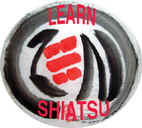Anatomy Physiology & Pathology Assignment:
MUSCULAR SYSTEM
(big assignment)

|
HEALTH WARNING: spending more than 3 hours on THIS assignment can seriously damage your enthusiasm. You might not get much done in 3 hours but do have patience with yourself. It will come A friend asks you if shiatsu can help with: LOWER BACK PAIN What are the symptoms and organic changes of their condition? What tsubos might help relieve their symptoms? What do you think might be the underlying elemental imbalance? What related organ/meridian network governs this anatomical system? What might be the related or local meridians, and why do you think so? Would you describe the condition as more kyo or more jitsu? What might be your treatment approach? How would you explain to your friend this condition in terms of energy-flow and elemental imbalances? What suggestions/recommendations might you make if your friend asks how they could share in their own healing – for example, life-style, diet, habits, exercise, meditation, other therapies? How would your responses differ for other conditions of the same system, and should any be contra-indicated? muscular dystrophy/atrophy/inflammation, spasm/cramp What are the three types of muscle and where are they found? What do they do and how do they work? What are the functional relationships betweeen muscles: agonist/antagonist; synergist and fixators? What would you advise for the safety and effectiveness of stretching exercises? Describe the anatomical locations of the following and meridians/extensions touching them: masseter temporalis occipito frontalis sternocleidomastoid
wrist/finger extensor/flexor/pronator groups intercostals diaphragm rectus abdominus rectus transverse oblique latissimus dorsi thoracic and lumbar erector spinae thoracolumbar fascia serratus anterior quadratus lumborum psoas major/minor piriformis gluteus maximus gluteus medius lateral rotator group quadriceps femoris sartorius biceps femoris gracilius semitendonosus semimembranosus adductor group gastrocnemius soleus tibialus anterior peroneus group How many muscles work to make a smile? How many work to make a frown? which would you recommend as the better exercise? SummaryThe Intermediate Diploma Assessment Requirement is for you to be able to explain, in everyday language as if to a friend with no knowledge of anatomy, the four following aspects of this system:
For Professional Licence Assessment you may be asked to explain anything from this assignment using anatomical/medical terminology – “as if on the telephone to a Latin-speaking Doctor!” Module Completion: please have your Tutor validate the following ASSIGNMENT COMPLETED:__________________date & stamp TUTORIAL ATTENDED_______________________date & stamp PRACTICAL ATTENDED:_____________________date & stamp LEARNING-TREATMENTS...........................attach for stamping What have you learned about yourself from this Assignment? |